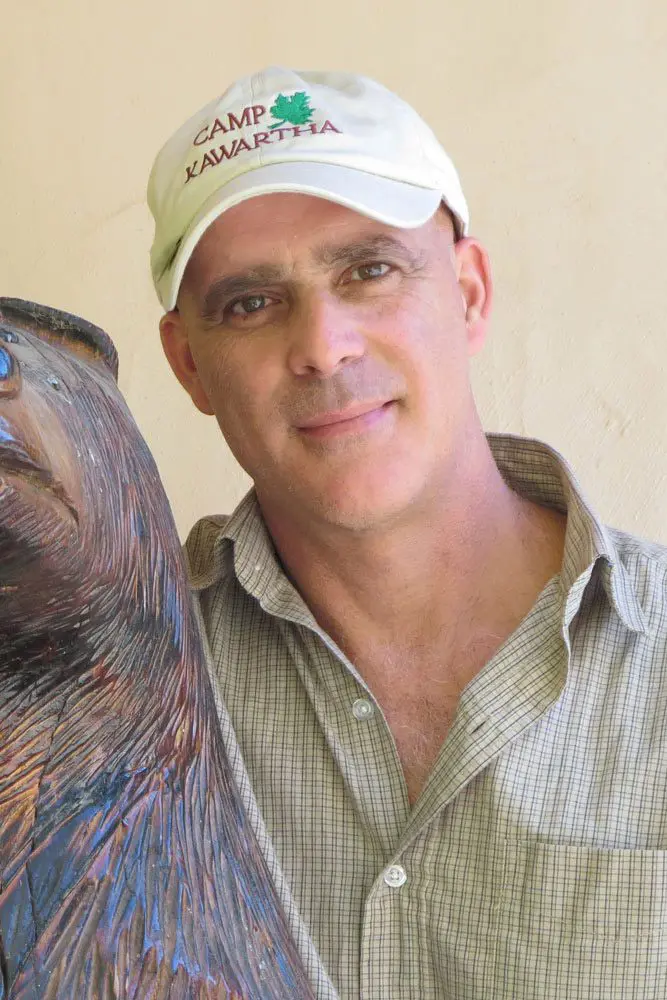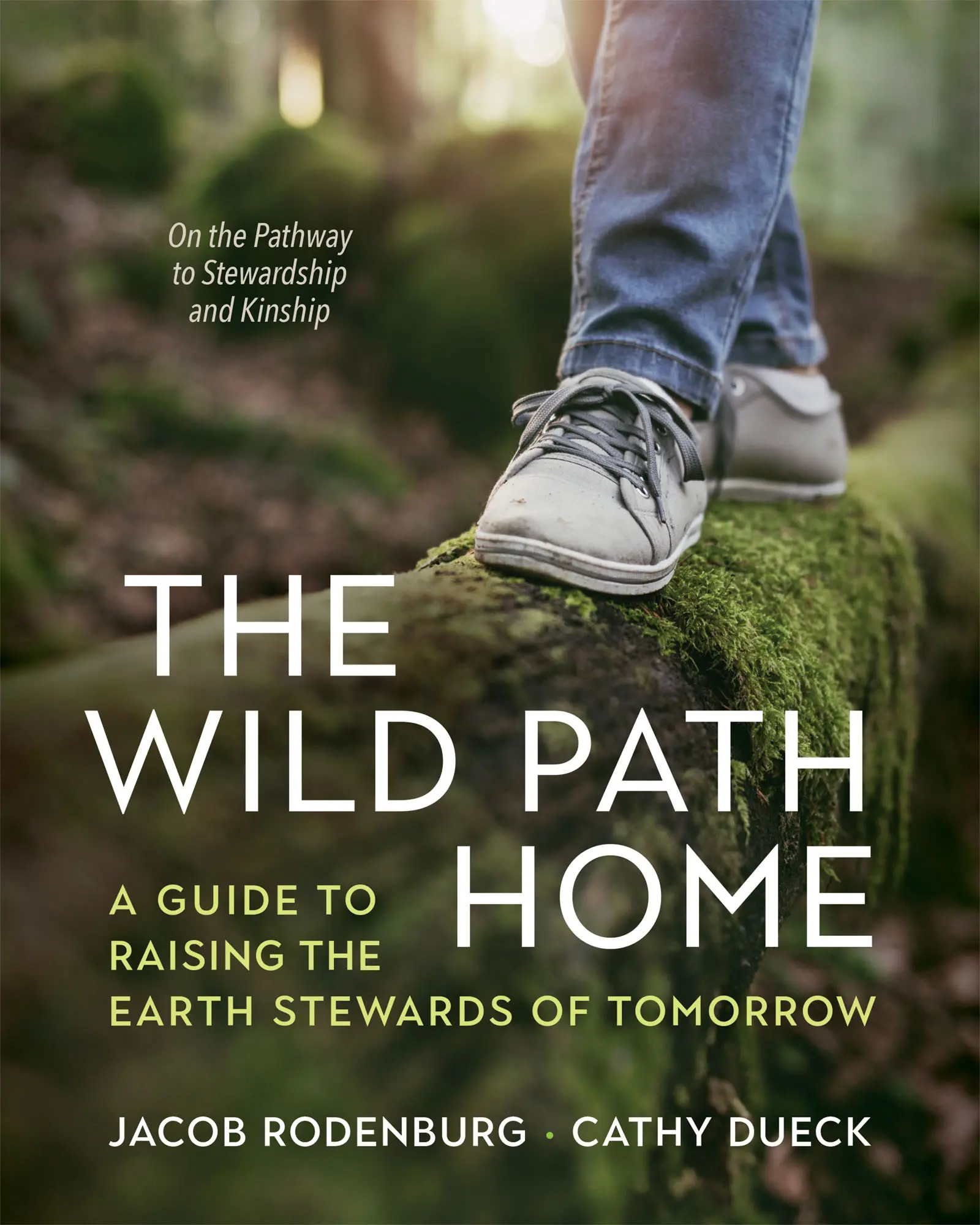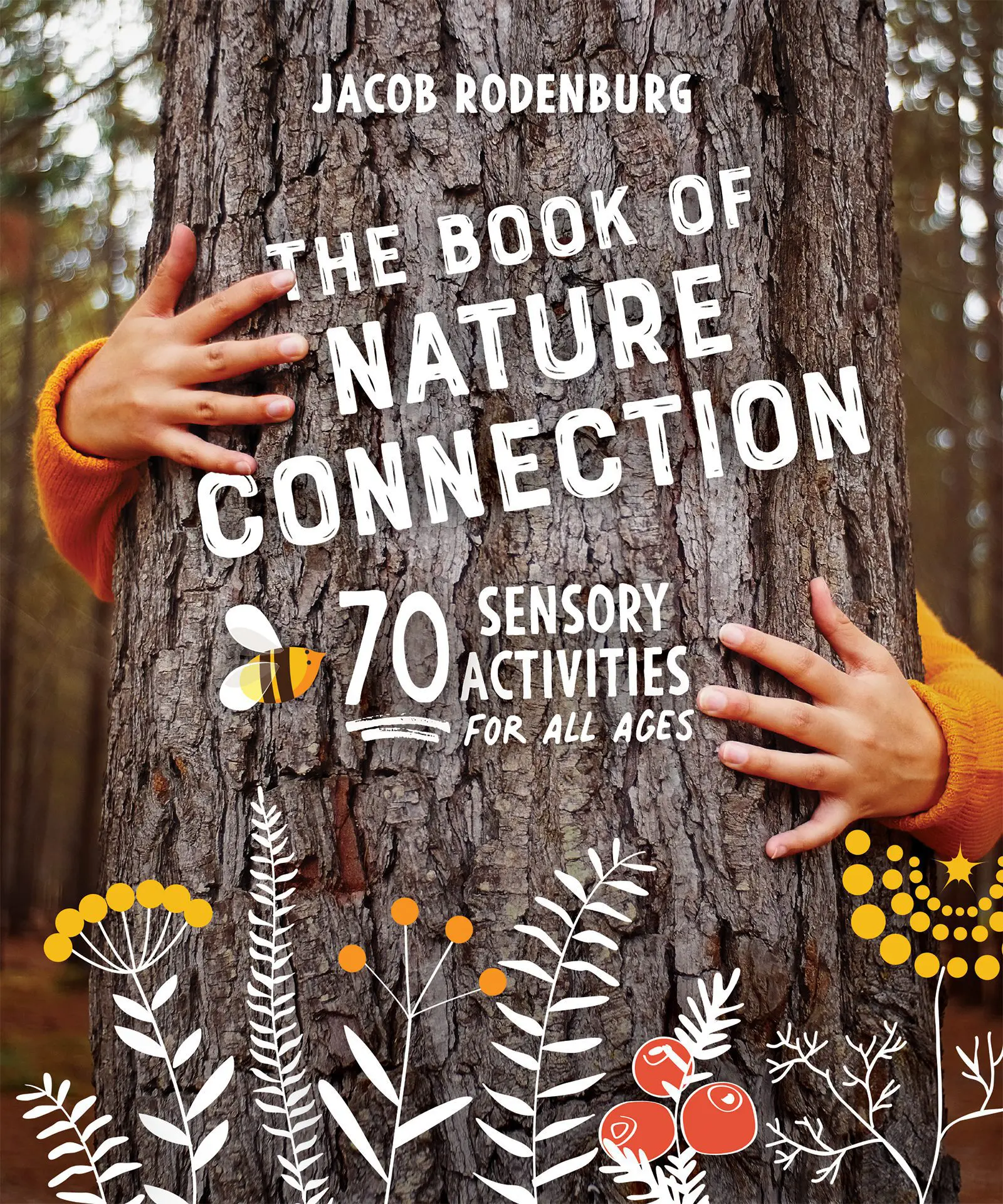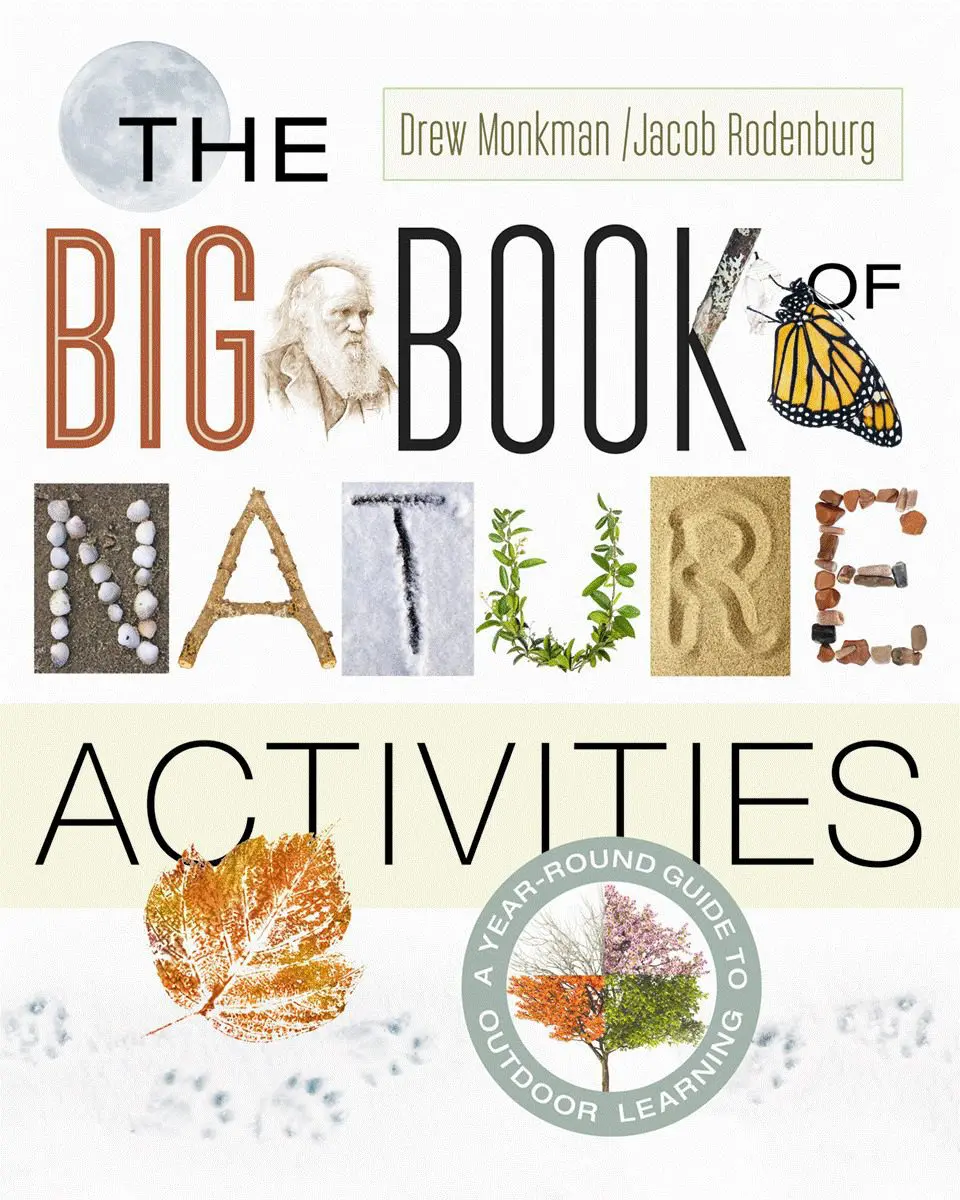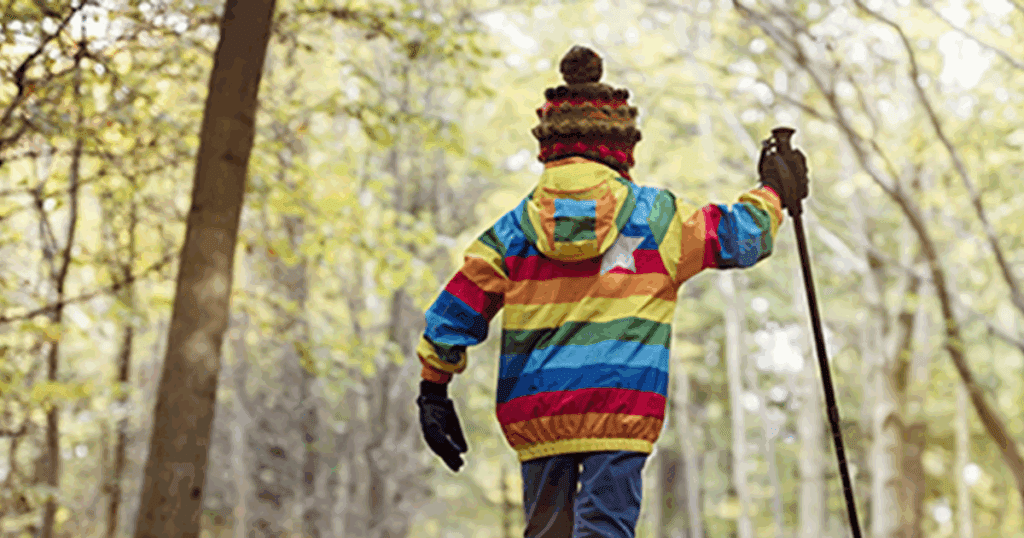
How do we help kids fall in love with the Earth? The answer isn’t complicated—it starts with simple moments of outdoor play, a sense of wonder, and the way we model respect for nature every day.
In this excerpt from The Wild Path Home, Jacob Rodenburg and Cathy Dueck explore timeless stewardship principles that anyone—parents, teachers, grandparents, and mentors—can use to nurture kids’ natural curiosity and connection. These values are universal, easy to practice, and remind us that caring for the planet begins right in our own backyards.
Key Stewardship Principles
Though many activities in this book are tailored to specific ages and stages of childhood, the guiding principles are timeless, universal, and relevant for all ages, regions, and cultures. These principles form the core of the Pathway to Stewardship and Kinship’s approach, providing a foundation that nurtures deep connections, a sense of responsibility, and a pathway toward building healthy, thriving communities— both now and for future generations.
Adults are powerful role models for young people. You don’t need to know the names or how everything functions in nature to be an effective mentor, but you do need to bring a positive and respectful attitude. This sends a message that resonates with children long after the experience. Even very young children can be taught to touch gently, step carefully, and observe quietly, ensuring no harm is done. Always return creatures to their habitats after observing them, sharing the excitement of how amazing they are. When adults model these behaviors, the message of stewardship becomes far more impactful than words alone.
This is a summary of the stewardship principles that are equally important for all ages and should be practiced and encouraged by everyone who interacts with young people.
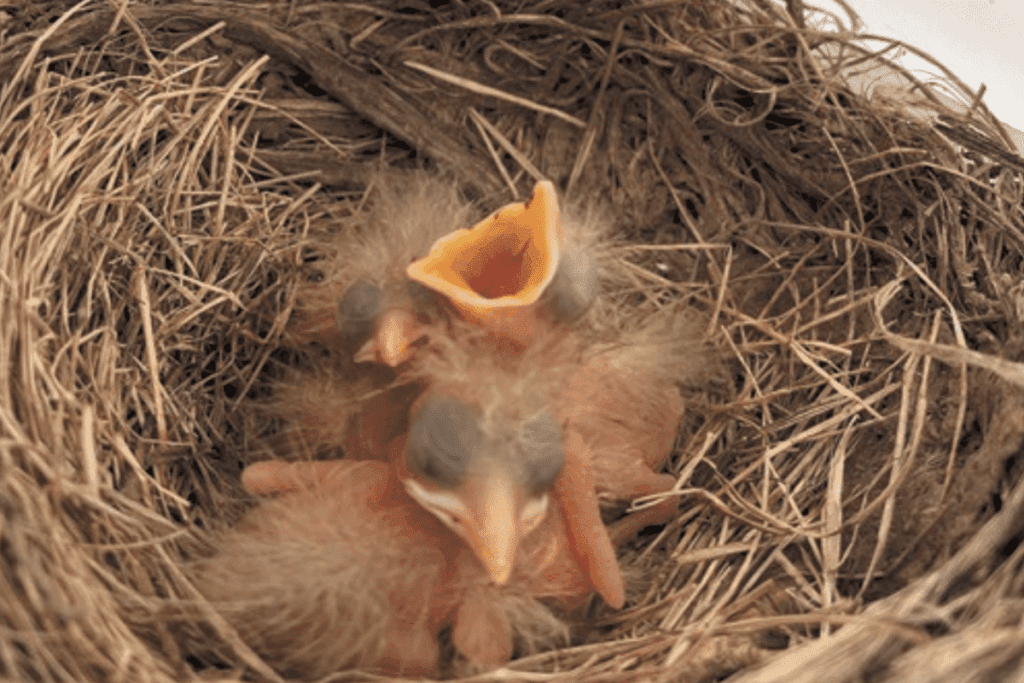
Respect for Each Other and All Nature
A fundamental value in fostering stewardship is the recognition that life, in all its forms, is amazing and that every being—human or nonhuman—deserves respect. As adults, it may require some personal reflection and the resolve to overcome fears or biases we’ve developed, so that we can become effective mentors for children on their journey toward stewardship. One simple way to cultivate respect and empathy is by providing children with positive experiences with animals, whether wild or domestic.
In Indigenous worldviews, even non-living elements are believed to possess a spirit—threads that weave together the fabric of life. Water, air, rocks, along with plants and animals, all play vital roles in creation and are equally deserving of respectful relationships.
This principle is so fundamental, it is recognized in the United Nations Convention on the Rights of the Child that “education of the child shall be directed to the development of respect for the natural environment.”
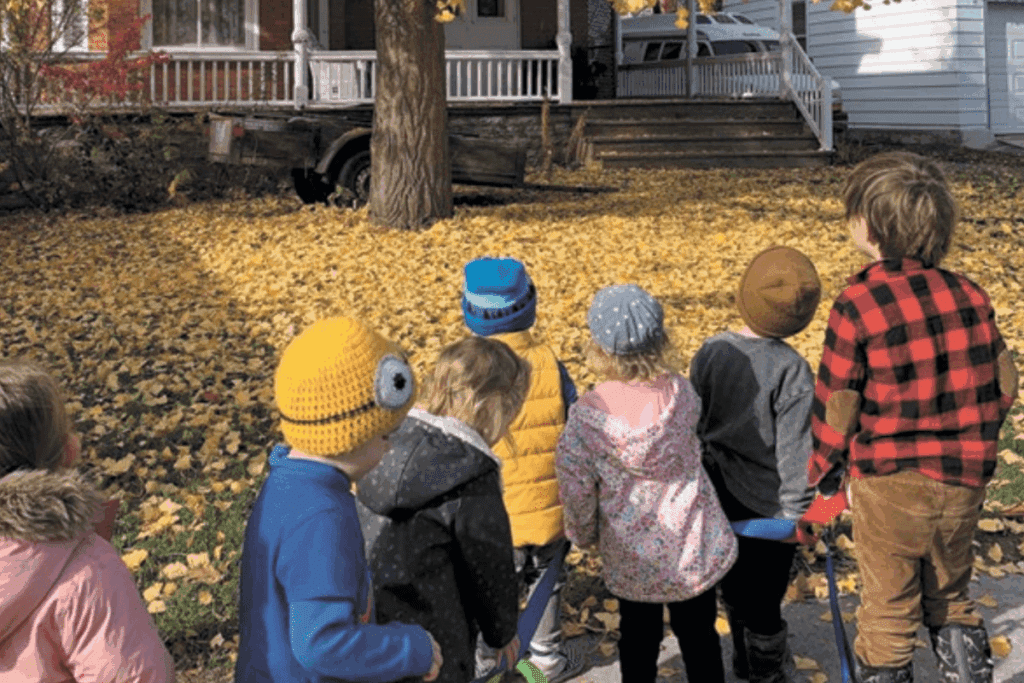
Sense of Awe and Wonder
We are never too old to appreciate the wonders of life, or to encourage and share that sense of awe that results from truly seeing the world around us. Awe and wonder fuel curiosity and a desire to learn, sparking the lifelong joy of discovery. We forget as adults how powerful language can be. If you want to cultivate a sense of wonder, you need to use the language of wonder. Phrases such as “Isn’t this amazing! I wonder…let’s go find out more” help to open a child’s eyes to the miracle of life itself.
When we truly exercise all our senses regularly, and notice tiny things as well as the big picture, we’re much more likely to see the miracles happening around us every day. It’s remarkable how much more you see when you travel on foot, rather than any type of faster moving vehicle. Slowing down, looking carefully, listening intently, smelling the seasonal changes, and encouraging children to touch the textures of nature draw us into a fascinating community of life that too often goes unnoticed.
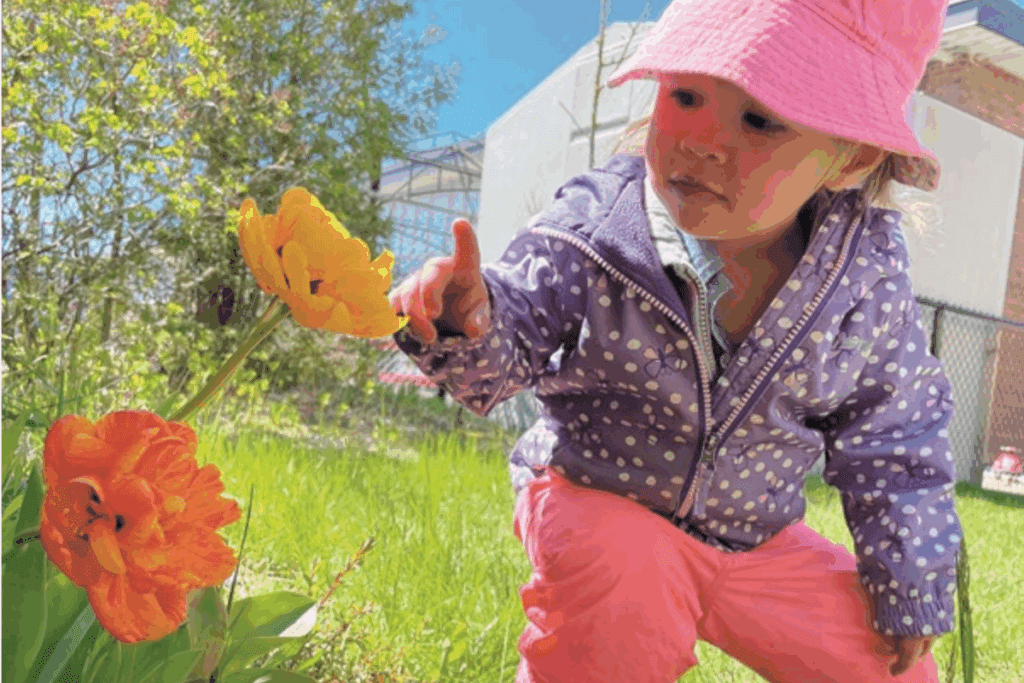
Natural Curiosity and Discovery
It is a wise teacher who knows when to share information and when to step back and let natural discoveries take place. Overloading children with facts can inhibit their interest in learning and discovering. The most effective learning centers on the child, not the teacher. Keep in mind that the engine of learning is curiosity. As adults, we need to remember that a name or a label is merely a beginning point. It is the start of a story—an intriguing one—and it is up to you to keep the story going! A good question should invite other questions. Think about your questions as ways to encourage kids to ask why, to wonder, to marvel at the natural world and to promote further exploration.
Sense of Place
An important part of developing a sense of security and belonging is spending enough time outdoors in the same place to become deeply familiar and connected with it. For those who have developed a particular attachment to a place when growing up, that sense of place becomes part of their identity. It is important to give children plenty of time to develop those deep attachments to place, whether that’s a favorite park, a cottage, a camp, or other outdoor place with special memories.
Every place on Earth is unique. Is your home near a forest, a grassland, a wetland or lake? Do you live on the arctic tundra, near a desert, or on the ocean shore? Is your home in a tropical or temperate rainforest, or do you live in the mountains? Getting to know and fall in love with the place you call home kindles a sense of family and belonging that extends beyond your human relatives. No other person on Earth is the same as you, and the place you live is unlike anywhere else. Taking the time to explore and grow “roots” in your home place takes time and patience but enriches our lives profoundly with a deep and lasting sense of connection.
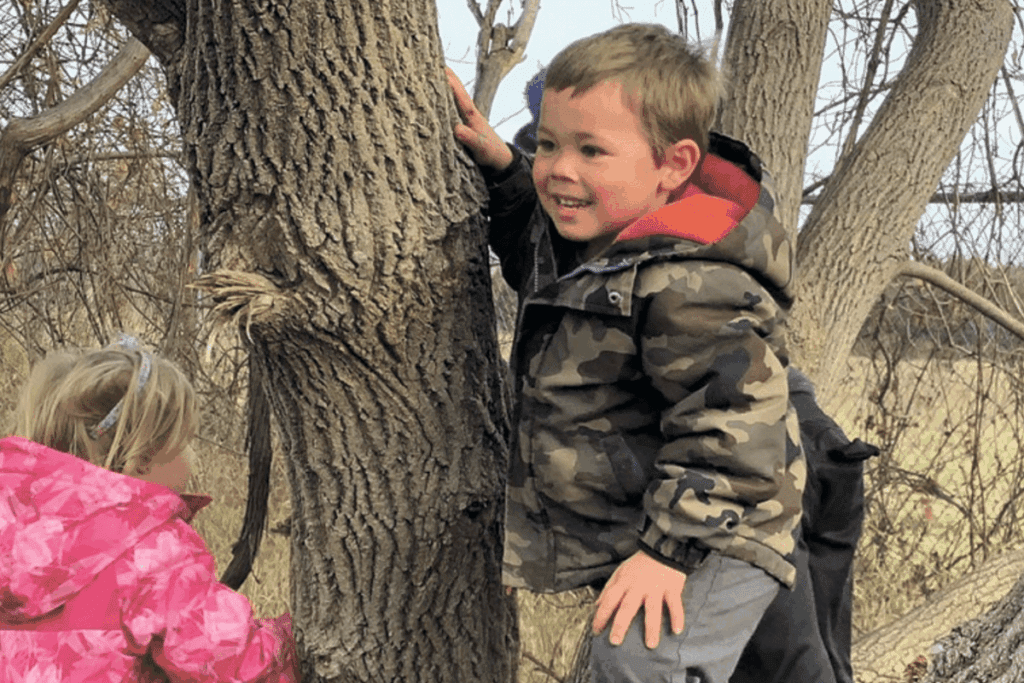
Sense of Gratitude
Often, we become so preoccupied by daily pressures and challenges that we become oblivious to the many wonders and gifts around us. Wisdom from many faith communities and Indigenous ceremonies remind us to take time every day to recognize and appreciate the many gifts of creation. This can begin with being more aware and mindful of the world around us—taking time to be calm, quiet, and present in the moment and seeing the wonders around us. It is also important to practice gratitude. The act of giving thanks helps to strengthen our connections to each other and to the special places that are an integral part of every community. A sense of gratitude helps to strengthen mental health at all stages of life. The container is now full and the class is very excited to begin boiling the sap tomorrow. Wow! We are thankful for the maples trees that gave us this gift.
Interconnectedness
Children benefit from many opportunities to learn how our lives are connected to the lives of other people and all things in nature. We share the same air, the same water—the food we eat contains nutrients made from atoms that have circulated for eons. This understanding reinforces our innate need to belong. Stewardship involves understanding that we belong to a community that extends far beyond our close friends and relatives and includes the living systems that are integral to health. Let’s encourage all children to get to know and love their “Neighbourwood.”
When you observe something in nature, think about the many ways that it is connected to its environment. What kind of habitat does it live in? What does it eat? Who eats it? How does it reproduce? How much space does it need? How does it move? Where does it find water? What was it doing when you discovered it? Was it camouflaged, or did it stand out from the things around it? Are there many others like it, or is this the only one? The questions we can ask to deepen our understanding of the world around us are limitless.
While the science of ecology is a relatively new field of study, Indigenous Peoples have known for millennia that all things, both living and nonliving, are deeply interconnected and equally important. Humans are no more important than any other part of creation, with each being a vital thread in the tapestry of life.


